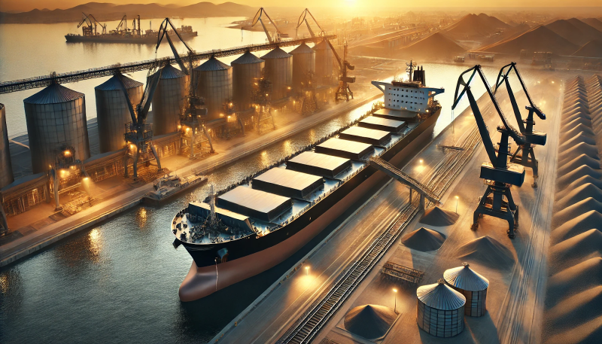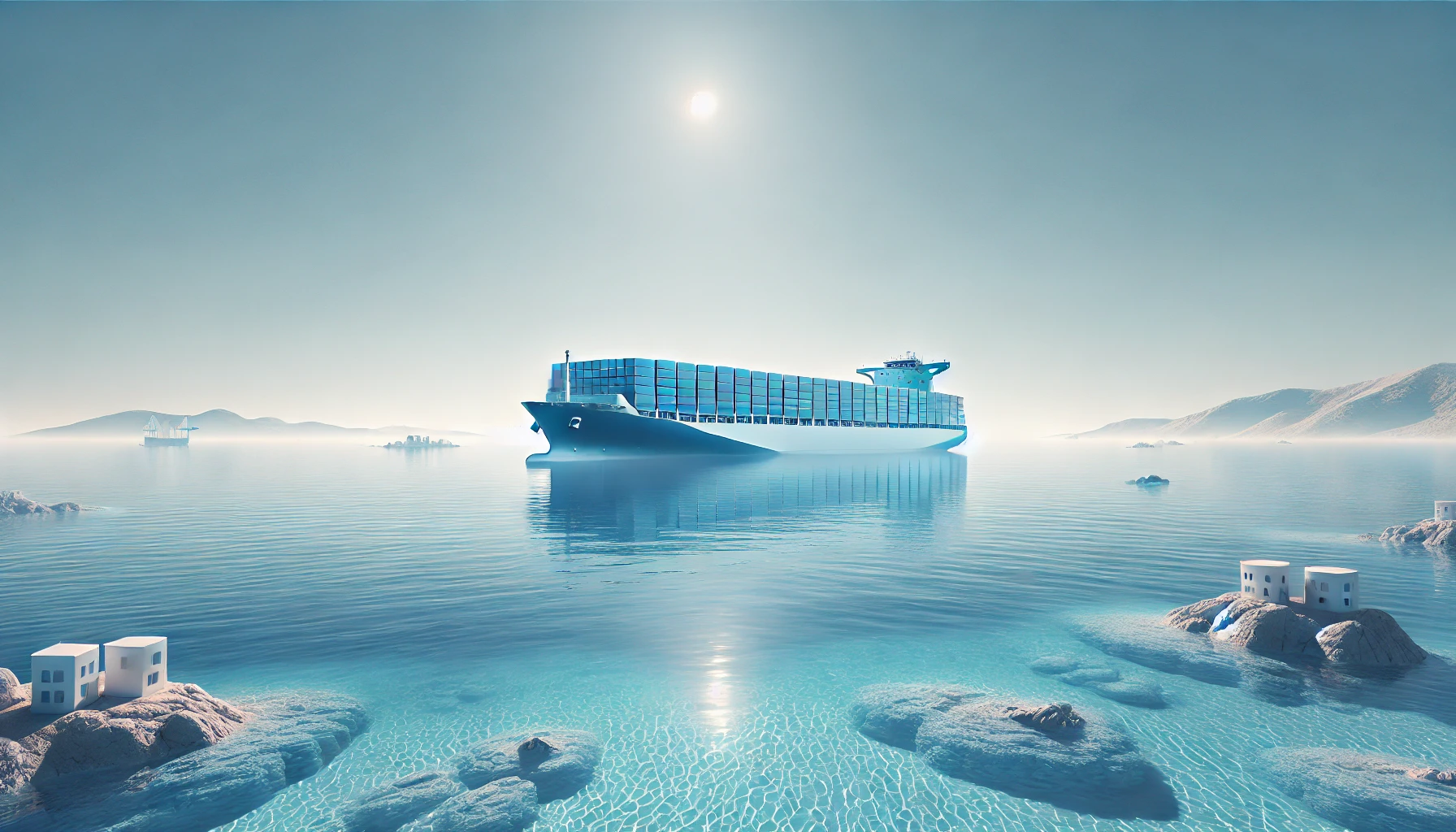Together with…

Introduction
The past five years have witnessed several remarkable investment success stories in the shipping industry, where savvy investors realized outsized returns by astutely timing market cycles and executing bold strategies. This report examines Oaktree Capital’s story – the first of four high-profile reports, each exemplifying how private capital can achieve exceptional gains in shipping. A concluding report will follow the four cases to distil lessons and strategic considerations for investors evaluating opportunities in the shipping sector.:
- Oaktree Capital’s turnaround of Torm – a distressed product tanker company restructured in 2015 that went on to multiply Oaktree’s equity value fivefold.
- John Fredriksen’s stake in Frontline – the Norwegian shipping magnate’s holdings in a crude oil tanker operator yielded a 3.5× return amid a cyclical rebound.
- Fredriksen’s bet on Golden Ocean – a leading dry bulk carrier where Fredriksen’s increased investment paid off 4.6× over five years, culminating in a lucrative exit.
- The Coustas Family’s position in Danaos Corp. – a containership leasing company in which the founding family’s stake ballooned 14× in value thanks to a post-restructuring boom in container markets.
- Comparative Analysis of the Four Cases and Key Takeaways

Background
Torm A/S is a Danish product tanker owner/operator that transports refined petroleum products. By the mid-2010s, Torm was in severe financial distress due to a prolonged downturn in tanker rates and an over-leveraged balance sheet.
In 2015, Oaktree Capital Management – a global alternative investment firm known for distressed investments – led a comprehensive restructuring of Torm. Oaktree and a group of lenders agreed to a debt-for-equity swap that wiped out $1.4 billion of Torm’s debt, effectively saving the company from insolvency. In exchange, Oaktree injected assets (25 second-hand tankers and 6 newbuild contracts from its portfolio) into Torm and assumed a controlling equity stake.
This “loan-to-own” strategy left Oaktree initially holding about 63.5% of Torm’s shares (roughly 99% of equity was held by Oaktree and former creditors post-restructuring). The recapitalized Torm emerged with a much cleaner balance sheet and an expanded, modernized fleet – a critical reset positioning it to ride an eventual market recovery.
Investment Timeline
Oaktree’s effective entry point can be marked at mid-2015 upon completion of the restructuring. At that time, Torm’s equity value was calibrated around $876 million (based on the post-swap valuation of Oaktree’s stake). However, the full payoff of this investment took several years to materialize. After restructuring, the product tanker market remained sluggish through the late 2010s.
Torm’s U.S. dual-listing on Nasdaq in 2018 provided liquidity but initially little uplift – shares traded around $8 in early 2018 amid tepid earnings. By 2019, Oaktree’s stake (≈47.6 million shares) was valued at only ~$372 million, reflecting the still-depressed tanker cycle. The true inflection began in 2020–2022: first, an oil price war and pandemic disruptions in 2020 created short-lived spikes in tanker demand (e.g. storing excess fuel at sea), and later, in 2022, the geopolitical shock of the Russia–Ukraine war upended oil product trade routes. Western sanctions on Russian refined products forced longer-distance transport of diesel, gasoline, etc., tightening the product tanker market dramatically.
Torm’s charter rates surged to multi-year highs, and the company recorded record profits in 2022. By 2023, Torm was returning substantial cash to shareholders – for example, over $4 per share in dividends was paid out across 2022 (a reflection of extraordinary earnings). Meanwhile, Torm’s stock price climbed steeply as investors re-rated the company’s prospects in the strong market.
By early 2024, Oaktree’s position had grown slightly to ~51 million shares (due to incremental share purchases or equity-based fleet deals) and, more importantly, the share price had quintupled from its 2019 level. With Torm’s U.S.-listed shares trading in the high-$30s, Oaktree’s stake was worth approximately $1.88 billion – a fivefold increase in value since 2019 (and roughly double the post-2015 value of its equity investment). Table 1 below summarizes the outcome:
| Investment Figures (Approximate, rounded) | 2019 (Post-Restructuring Lull) | 2024 (Market Peak) |
|---|---|---|
| Stake Held (Million Shares) | 47.6 | 51.0 |
| Stake Market Value | $372 million | $1.88 billion |
| Implied Share Price | $7.80 | $36.90 |
| 5-year Equity Multiple | – | 5x increase |
| Annualized IRR | – | 38% |
Value Creation Drivers
Several factors underpinned this dramatic value creation:
- Cycle Timing & Market Recovery: Oaktree’s entry via restructuring coincided with historically low product tanker asset values and rates. When the market eventually rebounded (especially in 2022), the operating leverage of a tanker owner like Torm translated into explosive earnings growth. Spot rates for product tankers, which averaged around $15–20k/day in late 2010s, spiked well above $40k/day at times in 2022–2023 amid dislocated trade patterns. Torm’s EBITDA margins expanded rapidly, demonstrating the classic cyclical upswing in shipping.
- Balance Sheet Restructuring: The 2015 debt reduction was crucial. By eliminating virtually all legacy debt, Oaktree gave Torm a sustainable capital structure. This meant that when charter revenues surged, cash flows accrued to equity rather than being drained by interest payments. Torm’s debt-to-equity ratio improved dramatically after the swap (effectively resetting net debt to near zero in 2015). Even as the company modestly re-levered to finance fleet expansion in subsequent years, its break-even rates remained low. The restructured balance sheet not only ensured survival through the downcycle but also maximized equity’s upside during the upcycle – a textbook private equity play in a distressed asset.
- Fleet Modernization and Expansion: With Oaktree’s contributed vessels, Torm’s fleet grew and skewed younger. The additional 25 tankers and newbuilds made Torm one of the larger product tanker operators globally and improved its operational leverage. Throughout 2016–2019, management (in alignment with Oaktree’s strategy) also shed older, inefficient ships and focused on high-spec vessels (including those equipped with fuel scrubbers for IMO 2020 sulfur regulations). By 2022, Torm’s fleet had expanded ~15% since pre-restructuring and was more fuel-efficient, allowing the company to capitalize on strong freight rates with lower unit costs. This fleet positioning was a deliberate strategic move that boosted Torm’s earnings in the recovery.
- Geopolitical and Demand Tailwinds: Exogenous events significantly accelerated Torm’s performance. Post-COVID demand normalization in 2021 saw more refined oil products needing transport as economies reopened. Then the Ukraine war in early 2022 created a sudden bifurcation in global refining supply chains – European countries had to source diesel from farther afield (Middle East, Asia, U.S.) instead of Russia, while Russia sent fuel to distant markets. Tonne-mile demand (volume × distance) for product tankers jumped, tightening vessel supply and sending charter rates to record highs. Torm, with its sizable modern fleet, was perfectly poised to benefit. These geopolitical gains were unpredictable but illustrate the upside volatility in shipping markets that skilled investors aim to harness.
Outcome and Partial Exit
By mid-2024, Torm’s share price had reached all-time highs (since its NYSE listing) on the back of successive strong quarterly earnings. Oaktree, true to its mandate of returning capital to investors, began monetizing its stake.
In late 2023, Oaktree sold a small tranche (~3.4% of Torm’s shares) for about $85 million, and in May 2024 it sold another 7.3% block for $252 million – both transactions at share prices ($30–$37) that confirmed the substantial gain from its entry point. These secondary offerings reduced Oaktree’s holding to just under 50%, locking in profits while still leaving significant “skin in the game.” As of mid-2024, with Torm’s market capitalization near $3.8 billion, Oaktree’s remaining ~46% stake was valued around $1.7–$1.8 billion.
In sum, Oaktree’s investment in Torm exemplifies a successful distressed-to-turnaround story: initial bold action (taking control through a debt swap and asset infusion) followed by patience through a cyclical trough, and eventually harvesting a fivefold return once the industry environment turned highly favourable.
Strategic Insights
For investors, Oaktree’s Torm case highlights the importance of counter-cyclical investing and restructuring expertise. Entering at the point of maximum distress (when most capital had fled the sector) allowed Oaktree to obtain a dominant stake for minimal cash outlay – largely via debt forgiveness and vessel contribution. This set the stage for outsized equity appreciation when the cycle reverted to mean or better.
The case also underscores the value of active ownership: Oaktree wasn’t a passive investor; it effectively became the sponsor of Torm’s revival, influencing strategy (fleet upgrades, listings on multiple exchanges for liquidity, disciplined capital allocation) to maximize value. Lastly, the partial exits in 2023–24 show prudent exit timing – gradually selling into strength to ensure realized returns.
The five-year 5× MOIC (~38% IRR) achieved here is a stellar outcome, but it was made possible by a longer-term horizon and willingness to weather interim volatility (e.g. Torm’s stock was flat or underperforming for a few years before skyrocketing). In shipping, patience and well-timed execution can transform a distressed asset into a star performer, as Oaktree’s playbook with Torm demonstrated.
Key Findings On All Four Investment Cases
The stellar outcomes from the featured shipping investments showcase what is possible in this volatile sector – five-year IRRs up to ~70% and multiples over 10× are virtually unheard of in most industries, yet were achieved here. Private markets investors can indeed reap such rewards, but the journey requires a solid stomach, deep insight, and sometimes a bit of luck with external events.
Shipping should be approached as a special situations play: it’s not a fit for every portfolio, but under the right circumstances, it can dramatically boost returns. The lessons in these four cases boil down to a few guiding principles: buy low, fix what’s broken, ride the wave, and sell high. Those are easy to say, harder to do – but as the Oaktrees and Fredriksens show, when executed well, the payoff is well worth it.
For private equity professionals evaluating shipping, the implication is not to shun the sector’s volatility, but to harness it. With disciplined strategy and timing, shipping investments can complement private market portfolios by providing uncorrelated, large-scale gains that few other industries can match.
The key is respecting the unique dynamics of maritime markets – treating cycles as king, managing risk fiercely, and being ready to both seize opportunities and exit decisively. If done right, the result can be transformational, turning distressed ships into treasure troves and vindicating the bold contrarian investor. In the cyclical seas of shipping, fortune favours the prepared – and as these great investment stories illustrate, the rewards for preparedness and courage can be truly spectacular.
We invite you to join us again in our next installment, “2. John Fredriksen’s stake in Frontline”, as we continue to explore the topic and provide further insights into this area of study.
Disclaimer
Index:
Data Room AccessData room access is available only for accredited and institutional investors due to FCA permissions.
To gain access, click and fill out the following form. Our compliance team will grant you access within 24 hours.



